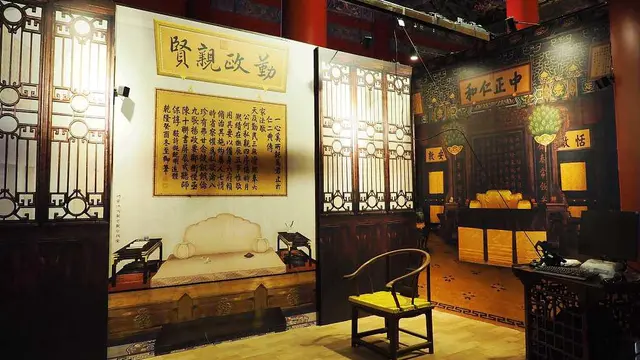Museums used to be a place of exhibits displayed on the wall or under glass covers. As digitalization booms in recent years, they're also seeking ways to catch up to the trend. Some do it to reduce the pressure brought on by crowds; others, to add to their charm in the modern age.
The Palace Museum is once China's imperial palace from 1420 to 1911. Every day, tens of thousands of people come to check it out. For years, visitors could only view the imperial items afar at the gates of each palace, or from the windows. Digitalization has changed that.
Digital Treasure Cabinet at the Palace Museum's digital gallery. /VCG Photo
At its digital gallery at the Duanmen Gate, the vases, pots and incense burners in the digital treasure cabinet are within visitors' reach. The real ones are too fragile to be put on public display. But through multimedia means, every single detail – the decorations, the material, and even the gloss – is revealed clearly.
Also being challenged by the overcrowding are the caves, sculptures and frescoes in the Mogao Grottoes at Dunhuang in northwest China. They have survived wars, environmental damage and antique hunters. But tourism has become the biggest threat today.
Mogao Grottoes digital center. /VCG Photo
An effective solution? Digitalized exhibitions.
A full dome theater, virtual reality glasses in exhibitions, and online access to the relics for people around the world. Different multi-media means enable people to be transported into the breathtaking virtual Dunhuang grotto.
And in some other traditional museums, digitalization is also applied to add some splendor to the exhibitions.
We have tried everything related to new technologies, including the use of multi-media and human-machine interaction, in every step of the exhibition. The digital approaches seem to be quite important in the long run, especially when physical exhibitions finish at museums, said Xie Xiaoquan, deputy director of the National Museum of China.
A lack of experience and some technological barriers pose big challenges to the digitalization process. But they also present opportunities for innovation and surprises. Museum managers say it takes courage to try new things, but the results are often worth it.
(CGYN)
 简体中文
简体中文

